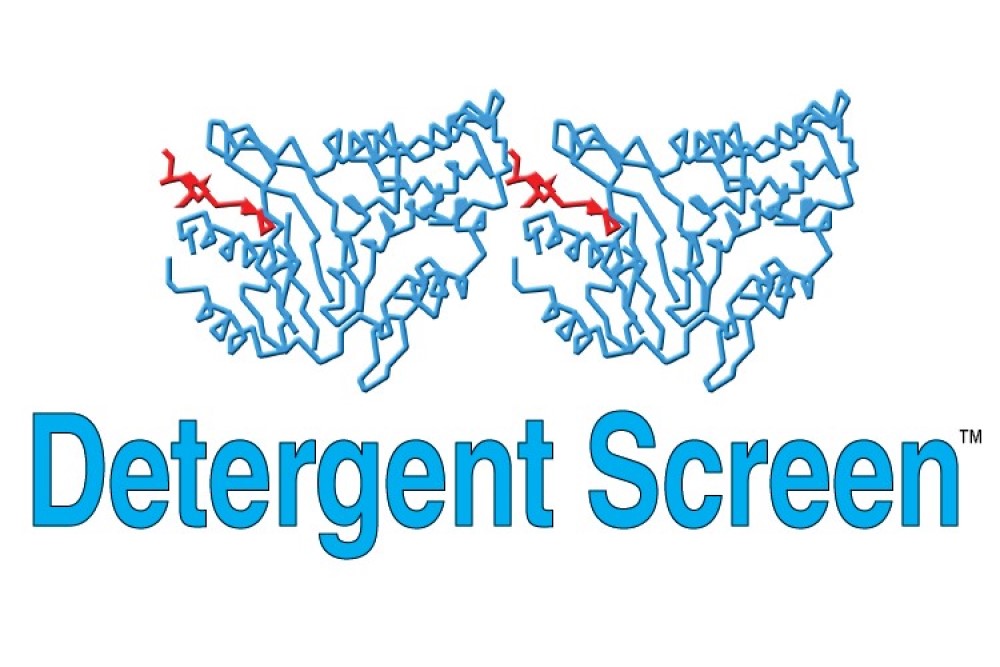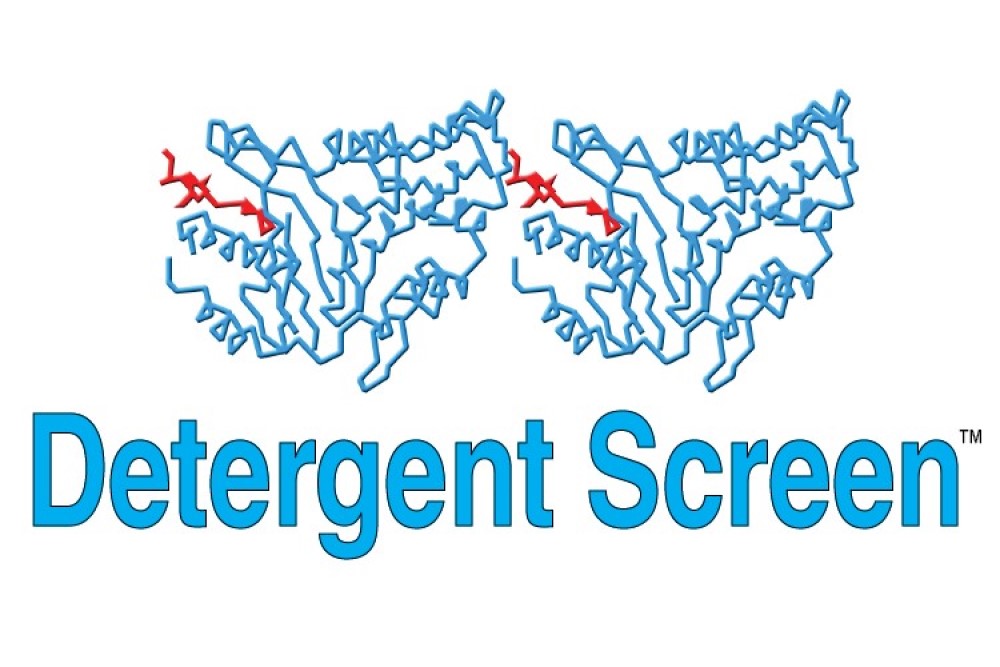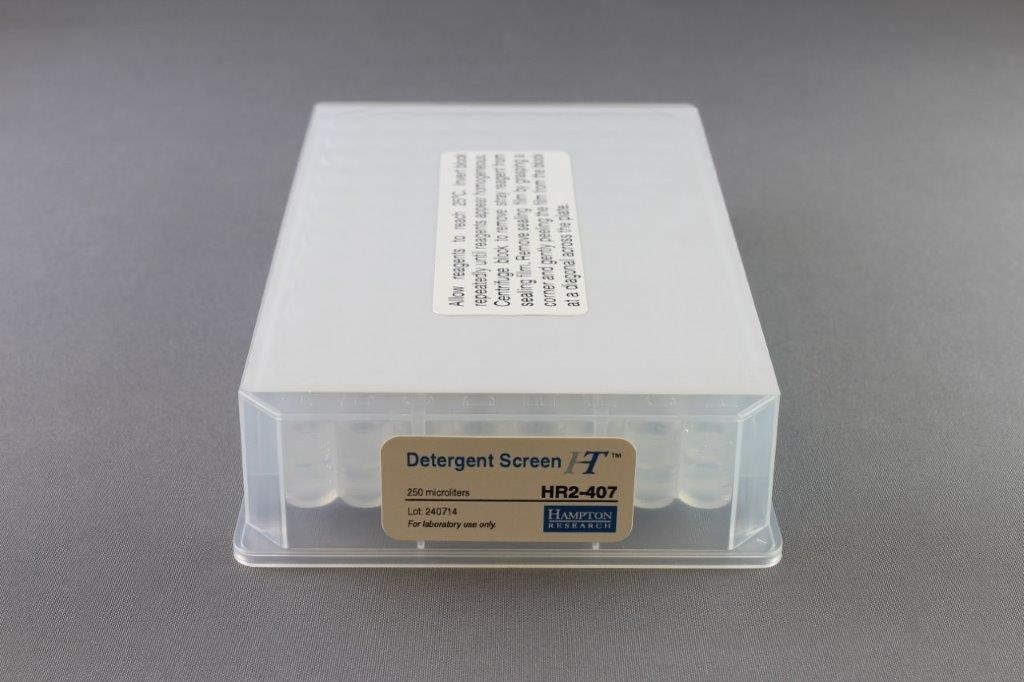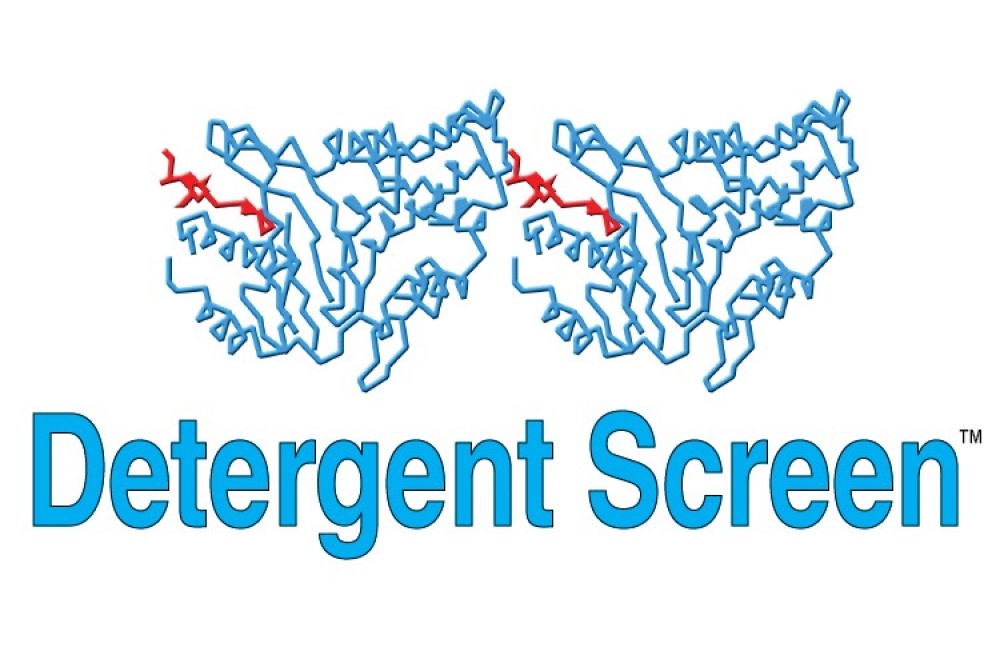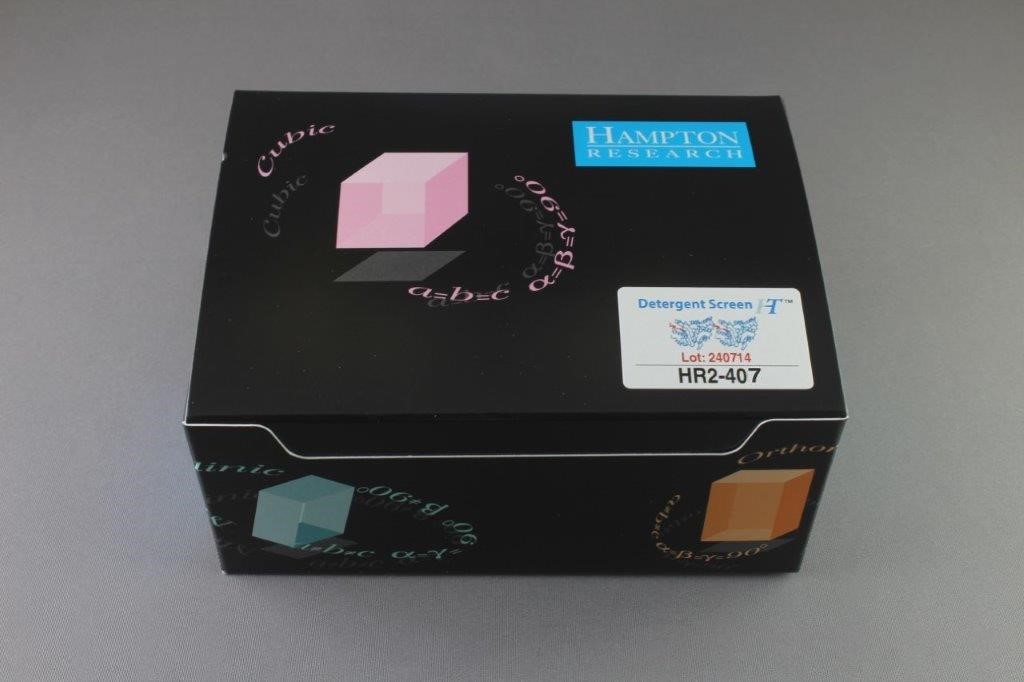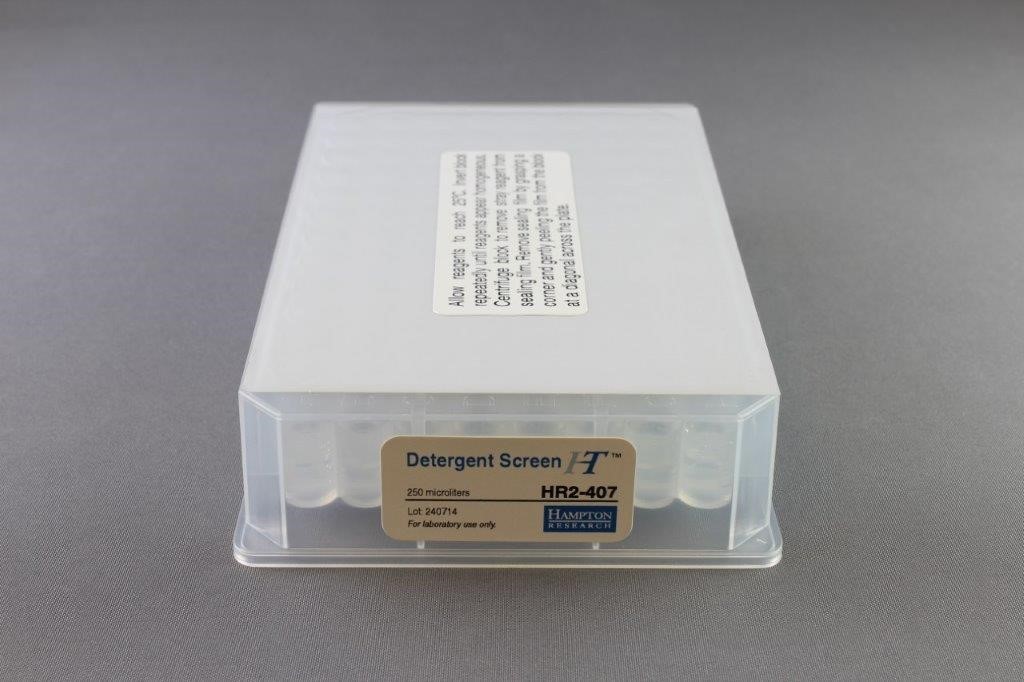Hampton Research蛋白结晶试剂盒






Products > Optimization Screens > Detergent Screen > Detergent Screen
Detergent Screen
Applications
- Manipulate sample-sample and sample-solvent interactions, including non-specific aggregation due to hydrophobic interactions, to alter sample solubility, or obtain or improve crystalline samples.
Features
- Developed at Hampton Research
- For use with either membrane or soluble proteins
- Compatible with vapor diffusion, microbatch, and free interface diffusion methods
- 96 Deep Well block format
- Classification of Detergents in screen
- Ionic
- Non-ionic
- Zwitterionic
- Non-detergent Sulfobetaines
Description
Note: HR2-407 Detergent Screen is a new formulation and has replaced the original HR2-406 Detergent Screen HT.
For crystallization to take place, a protein must be soluble in aqueous solution. Ideally the sample should be homogeneous, monodisperse, and in a state of aggregation conducive to interactions which will promote the nucleation and subsequent growth of a crystal. Unfavorable aggregation can compete with, obstruct, and prevent the normal ordering or the sample into a crystal. Many proteins, typically membrane proteins, membrane associated proteins, and soluble proteins contain hydrophobic residues on the surface which can lead to non-specific aggregation, a deterrent to solubility and crystallization. Mild, biological detergents can perturb and manipulate hydrophobic sample-sample and sample-solvent interactions. Incorporating detergents into the solubilization or crystallization reagent during screening and optimization is a popular and effective strategy for identifying conditions which promote and enhance solubility and crystallization. Besides improving the crystallization properties for some proteins and nucleic acids, detergents have also been shown to alleviate problems of twinning and secondary nucleation and can also produce different crystal forms.
Since it can be difficult to impossible a priori to predict and select which detergent or solubilizing agent will minimize the general nonspecific interactions yet at the same time sustain the specific interactions necessary for crystallization, the screening of a portfolio of detergent and solubilizing reagents is an efficient and effective strategy to identify the appropriate and best detergent reagent. The Detergent Screen is a set of solubilization and crystallization specific, mild, biological detergent reagents in a ready to use format at concentrations appropriate for solubility and crystallization screens. The Detergent Screen format allows one to identify a detergent effect as well as help select the best detergent reagent.
Each Detergent Screen kit contains 96 unique detergents. 0.25 ml of detergent solution is formulated at 10 times the reported CMC (unless otherwise noted) in sterile filtered deionized water. The Detergent Screen kit contains 96 solutions in a single Deep Well block, a single sheet of AlumaSeal II Sealing Film, User Guide, Formulations, and Scoring Sheet.
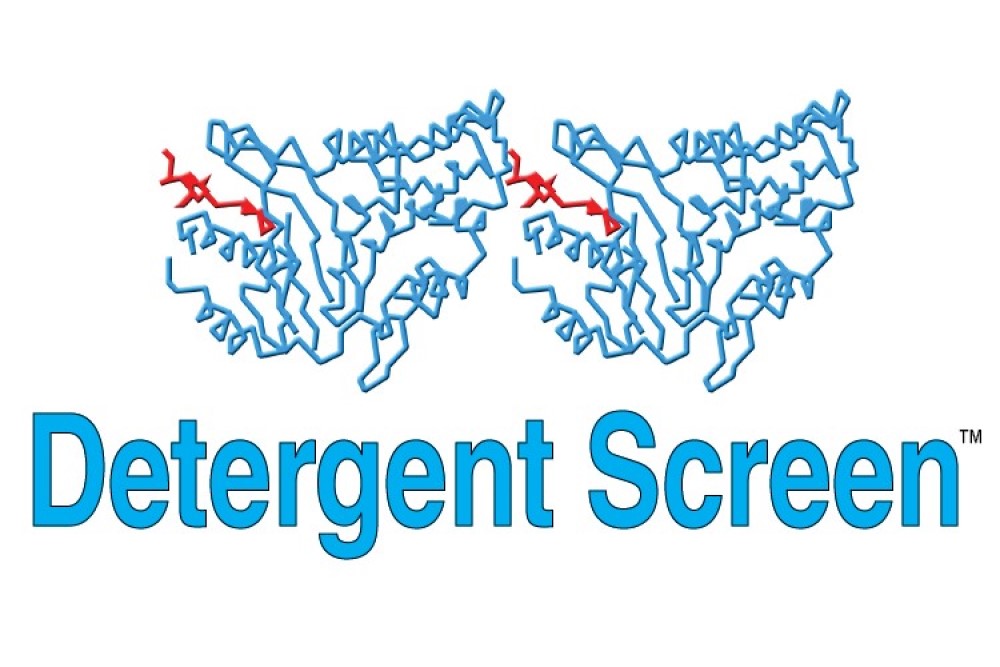
Click to Zoom In
CAT NO
HR2-407
NAME
DESCRIPTION
0.25 ml, Deep Well block format
PRICE
$454.00
cart quote
Support Material(s)
 HR2-407 Detergent Screen Documents
HR2-407 Detergent Screen Documents HR2-407 Detergent Screen SDS
HR2-407 Detergent Screen SDS Detergent Screen Formulation & Scoring Data
Detergent Screen Formulation & Scoring Data Related Item(S)
- Individual Detergent Screen Reagents
References
1. Protein crystallogra phy with non detergent sulfobetaines. Laurent Vuillard, Bassem Baalbakia, Mogens Lehmanna, Sofie Norager, Pierre Legrand, Michel Roth. 1996, J Cryst Growth 168 150-154.
2. A defined protein–detergent–lipid complex for crystallization of integral membrane proteins: The cytochrome b6f complex of oxygenic photosynthesis. Huamin Zhang, Genji Kurisu, Janet L. Smith, and William A. Cramer. Proc Natl Acad Sci U S A. 2003 April 29, 100(9): 5160–5163.
3. An experiment regarding crystalliza tion of soluble proteins in the pres-ence of b-octyl-glucoside. McPherson A., Koszelak, S., Axelrod, H., Day, J., Williams, R., McGrath, M., Robinson, L., and Cascio, D. 1986, J. Biol. Chem. 261: 1969.
4. McPherson A. (1999). Crystallization of Biological Macromolecules. Cold Spring Harbor Laboratory Press, 253-258.
5. Crystallization of membrane proteins. Edited by Hartmut Michel, CRC Press, 1991.
6. Crystallization of nucleic acids and proteins, Edited by A. Ducruix and R. Giege, The Practical Approach Series, Oxford Univ. Press, 1992 175-191.
7. The effects of neutral detergents on the crystallization of soluble proteins. A. McPherson et al. 1986, J. Crystal Growth, 76, 547-553.
8. Kuhlbrand, W., Quarterly Rev. Biophys., 21, 429, 1988.
9. Garavito, R.M., & Picot, D., Methods, A Companion to Methods in En-zymology, 1, 57, 1990.
10. The growth and characterization of membrane protein crystals. R. Mi-chael Garavito, Zora Markovic-Housley, John A. Jenkins. 1986, Journal of Crystal Growth, 76, 701-709.
11. Screening and optimization strategies for macromolecular crystal growth. R. Cudney, S. Patel, K. Weisgraber, Y. Newhouse and A. McPherson. 1994, Acta Cryst. D50, 414-423.


Hampton Research, first in crystallization since 1991, developing and delivering crystallization and optimization screens, reagents, plates, and other tools for the crystallization of biological macromolecules, including proteins (antibody), peptides (insulin), and nucleic acids (DNA).
- Products
- Gallery
- My Account
|
|
|
- Contact Us
- Quick Order
- Support
|
- Privacy Policy
- Terms and Conditions
|
- Products
- Gallery
- My Account
- Support
- Contact Us
- Quick Order
- Privacy Policy
- Terms and Conditions
|
|
|
|
|
|
|
© 2021 HAMPTON RESEARCH CORP.
| Website by Skyhound Internet


